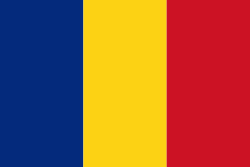Săcele
Săcele (German: Siebendörfer; Hungarian: Négyfalu, between 1950 and 2001 Szecseleváros) is a city in Brașov County, Romania, in the Burzenland area of southeastern Transylvania, with a population of 30,798 inhabitants in 2011. It is adjacent to the city of Brașov, its city centre being situated 15 km away from downtown Brașov.
The city since 1950 is composed of former villages which now form the main sectors: Baciu (Bácsfalu, Batschendorf), Turcheș (Türkös, Türkeschdorf), Cernatu (Csernátfalu, Zerndorf), and Satulung (Hosszúfalu, Langendorf). After the second half of the 11th century the villages were mentioned as "septem villae valacheles" (seven Vlach villages).
The first official mention of Săcele was an act issued on May 16, 1366, by the Hungarian King Ludovic I de Anjou in which he offers the area between the Timiș and Olt rivers to a trusted friend—Count Stanislav. Later it was under the Saxon management of Kronstadt (Brașov). Between the 13th and 14th centuries, an important Hungarian population settled in the region, marking the further development of the area.
During the Middle Ages three other villages belonged to the locality: Tărlungeni, Zizin, and Cărpiniș.
The Romanian name "Săcele" was first mentioned in a letter between the Wallachian Prince Vlad Călugărul (1482–1495) and the magistrate of Brașov. The Romanian etymology of "Săcele" is from "sătucele" meaning "small villages".
The German name was "Siebendörfen" which means "seven villages" and which is close to the Hungarian name "Hétfalu" or "Négyfalu". See also Seven Villages.
The inhabitants were the Mocani—local shepherds. They are mentioned in a few official documents and appear to have owned thousands of sheep, the villages being among the wealthiest in the area. They carried the local traditions across many Romanian lands due to the transhumance method of shepherding. Their customs exist to these days: the "Sîntilie" (Saint Elijah) festival, national costumes, etc.
After the Romanian Revolution of 1989, the city diversified its economy. In Săcele there are nowadays several small furniture factories, lumber-mills, as well as meat-packaging facilities.
The city since 1950 is composed of former villages which now form the main sectors: Baciu (Bácsfalu, Batschendorf), Turcheș (Türkös, Türkeschdorf), Cernatu (Csernátfalu, Zerndorf), and Satulung (Hosszúfalu, Langendorf). After the second half of the 11th century the villages were mentioned as "septem villae valacheles" (seven Vlach villages).
The first official mention of Săcele was an act issued on May 16, 1366, by the Hungarian King Ludovic I de Anjou in which he offers the area between the Timiș and Olt rivers to a trusted friend—Count Stanislav. Later it was under the Saxon management of Kronstadt (Brașov). Between the 13th and 14th centuries, an important Hungarian population settled in the region, marking the further development of the area.
During the Middle Ages three other villages belonged to the locality: Tărlungeni, Zizin, and Cărpiniș.
The Romanian name "Săcele" was first mentioned in a letter between the Wallachian Prince Vlad Călugărul (1482–1495) and the magistrate of Brașov. The Romanian etymology of "Săcele" is from "sătucele" meaning "small villages".
The German name was "Siebendörfen" which means "seven villages" and which is close to the Hungarian name "Hétfalu" or "Négyfalu". See also Seven Villages.
The inhabitants were the Mocani—local shepherds. They are mentioned in a few official documents and appear to have owned thousands of sheep, the villages being among the wealthiest in the area. They carried the local traditions across many Romanian lands due to the transhumance method of shepherding. Their customs exist to these days: the "Sîntilie" (Saint Elijah) festival, national costumes, etc.
After the Romanian Revolution of 1989, the city diversified its economy. In Săcele there are nowadays several small furniture factories, lumber-mills, as well as meat-packaging facilities.
Map - Săcele
Map
Country - Romania
 |
 |
| Flag of Romania | |
Europe's second-longest river, the Danube, rises in Germany's Black Forest and flows southeasterly for 2857 km, before emptying into Romania's Danube Delta. The Carpathian Mountains cross Romania from the north to the southwest and include Moldoveanu Peak, at an altitude of 2544 m.
Currency / Language
| ISO | Currency | Symbol | Significant figures |
|---|---|---|---|
| RON | Romanian leu | lei | 2 |
| ISO | Language |
|---|---|
| HU | Hungarian language |
| RO | Romanian language |















